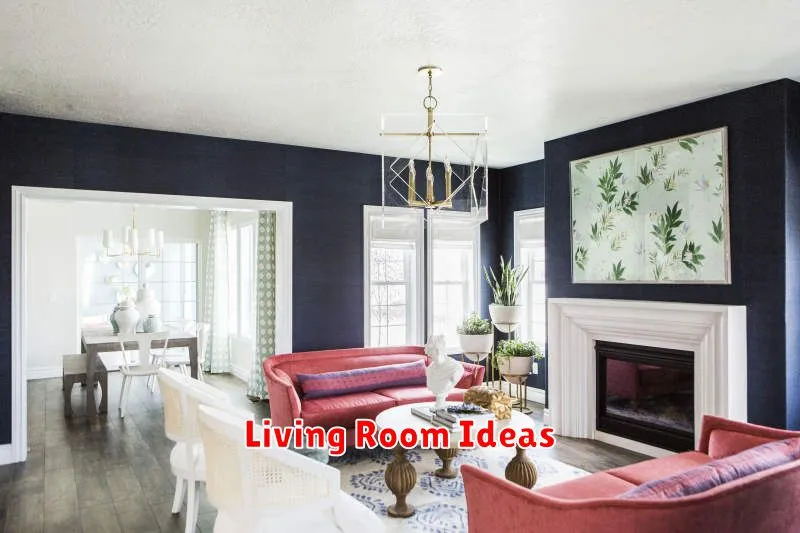Transform your living room from cramped to captivating with our curated collection of 10 Living Room Designs to Maximize Space and Style. Discover ingenious space-saving solutions and elegant design ideas to create a spacious and stylish living area that perfectly reflects your personal aesthetic. Whether you’re working with a small living room or a large open-plan space, we offer practical tips and inspiring visuals to help you optimize your space and achieve the living room of your dreams. Learn how to blend functionality and design to create a haven of comfort and sophistication.
Modern Minimalist Design
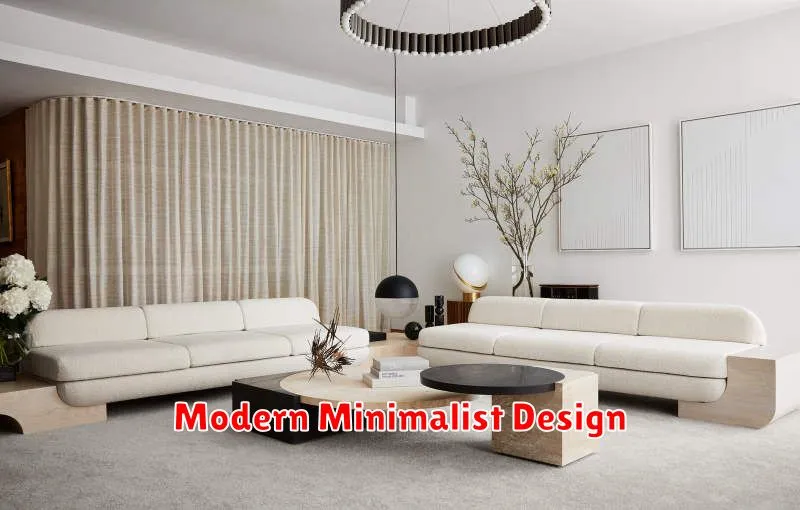
Modern minimalist design is characterized by its clean lines, simple forms, and uncluttered spaces. It prioritizes functionality and avoids unnecessary ornamentation, creating a sense of calm and serenity.
Key elements of this style include a neutral color palette, often featuring shades of white, gray, and beige. Natural materials such as wood, stone, and concrete are frequently incorporated to add warmth and texture without overwhelming the minimalist aesthetic.
Functionality is paramount. Every piece of furniture and decorative element serves a purpose. Storage solutions are carefully integrated to maintain a tidy appearance. The overall effect is a space that feels both spacious and inviting.
While minimalism emphasizes simplicity, it doesn’t equate to starkness. Careful consideration is given to the selection of materials and the arrangement of elements to create a visually appealing and harmonious environment. Subtle textures and strategically placed accent pieces can add depth and interest without compromising the overall minimalist aesthetic.
Modern minimalist design is not simply a style; it’s a philosophy reflecting a desire for clarity, order, and a focus on what truly matters. It’s a style that continues to evolve and adapt to contemporary living, offering a timeless and versatile approach to interior design.
Industrial Loft Style
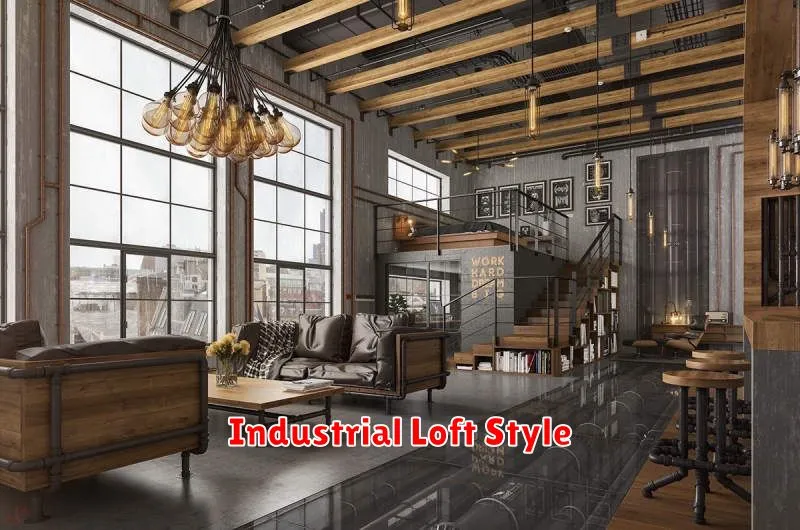
The industrial loft style is a popular interior design aesthetic characterized by its raw, utilitarian elements and open, spacious layouts. It often incorporates exposed brick, metal, and concrete, creating a distinctly urban and edgy atmosphere.
Key features of this style include high ceilings, large windows that allow abundant natural light, and a neutral color palette typically featuring shades of gray, brown, and black. These are often accented with pops of color in furniture or artwork.
Materials commonly used in industrial loft design are crucial to achieving the authentic look. Exposed ductwork and pipes, along with reclaimed wood, are frequently incorporated to add to the sense of history and repurposed materials.
Furniture choices often reflect the industrial theme. Think metal accents, leather seating, and simple, functional pieces. The overall effect should be one of deliberate simplicity rather than cluttered ornamentation.
Lighting plays a vital role in setting the ambiance. Industrial-style lighting fixtures, such as exposed bulb pendants or track lighting, are common choices, adding to the raw, functional aesthetic. Strategically placed lighting can highlight key architectural features.
While the industrial loft style evokes a sense of ruggedness, it can be adapted to different levels of comfort and sophistication. Adding plush rugs, comfortable seating, and carefully chosen artwork can soften the starkness and create a welcoming space.
Ultimately, the success of an industrial loft design hinges on a careful balance between raw industrial elements and comfortable, functional living spaces. The result is a uniquely stylish and adaptable design that appeals to a wide range of tastes.
Scandinavian Simplicity
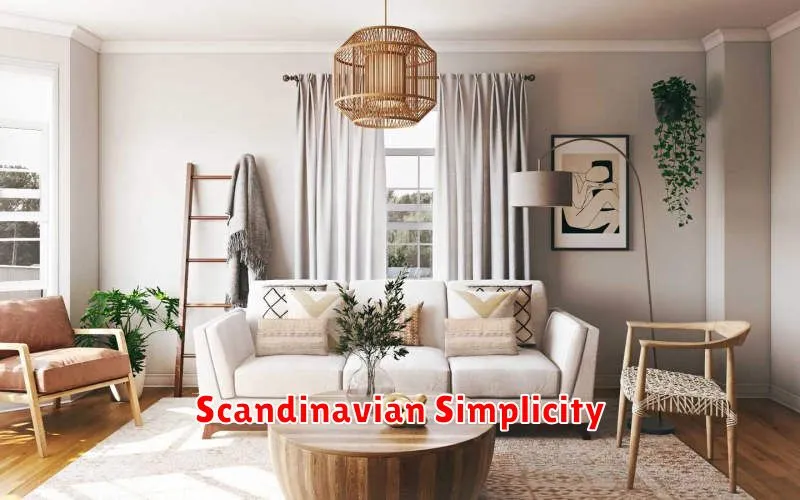
Scandinavian design, often referred to as Nordic design, is characterized by its minimalist aesthetic and functional approach. It emphasizes clean lines, natural materials, and a focus on practicality. This style prioritizes simplicity and functionality above all else, creating spaces that are both beautiful and easy to live in.
The core principles of Scandinavian design stem from the region’s unique climate and culture. The long, dark winters necessitate the use of light-colored walls and ample natural light to brighten interiors. Natural materials, such as wood, stone, and wool, are heavily featured, providing warmth and texture in a sometimes harsh environment. The emphasis on functionality reflects a practical approach to design, valuing utility and durability over superfluous ornamentation.
Minimalism is a key element of Scandinavian design. Clutter is avoided, with a focus on only including essential furniture and decor. This creates a sense of calm and spaciousness, even in smaller rooms. The color palette typically features muted tones, such as whites, grays, and blues, often accented with pops of brighter colors. This restraint in color choice contributes to the overall feeling of serenity and tranquility.
Beyond its aesthetic appeal, Scandinavian design reflects a philosophy of living. It embraces a sense of harmony between the indoors and outdoors, often incorporating natural elements like plants and flowers into the design. The focus on functionality and simplicity extends to the lifestyle it supports, promoting a sense of balance and well-being.
In conclusion, Scandinavian simplicity is more than just a design aesthetic; it’s a lifestyle choice that values functionality, minimalism, and a connection to nature. Its enduring popularity stems from its ability to create beautiful, calming, and practical living spaces that are both timeless and adaptable.
Rustic Farmhouse Look
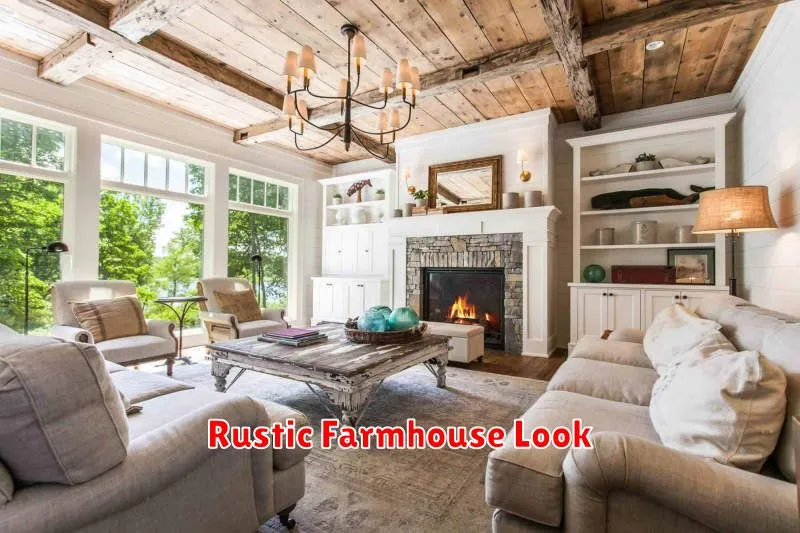
The rustic farmhouse aesthetic blends the charm of old-world craftsmanship with the comfort of modern living. It’s characterized by a warm, inviting atmosphere created through a careful selection of materials and design elements.
Key features of this style include the use of natural materials such as reclaimed wood, stone, and exposed beams. These elements contribute to a sense of authenticity and history. Neutral color palettes, often featuring shades of white, cream, beige, and gray, create a backdrop that allows the natural textures to shine.
Furniture is typically simple and functional, often incorporating pieces with a distressed or worn look. Think sturdy wooden tables, comfortable upholstered chairs, and perhaps a vintage dresser. Functionality is paramount; each piece serves a purpose and contributes to the overall feeling of ease and practicality.
Adding personal touches is crucial to achieving a truly lived-in feel. Family heirlooms, vintage finds, and handmade crafts contribute to a unique and personalized space. Textiles play a significant role, with cozy throws, textured rugs, and linen curtains adding warmth and comfort.
Lighting is another important consideration. Warm, ambient lighting, perhaps provided by a combination of pendant lights, table lamps, and candles, helps create a welcoming ambiance. The overall effect should be one of relaxed sophistication, blending rustic charm with a touch of modern elegance.
While achieving a rustic farmhouse look requires careful consideration of details, the result is a style that is both timeless and deeply personal. It’s a style that transcends trends, offering a sense of enduring warmth and comfort.
Bohemian Chic Interior
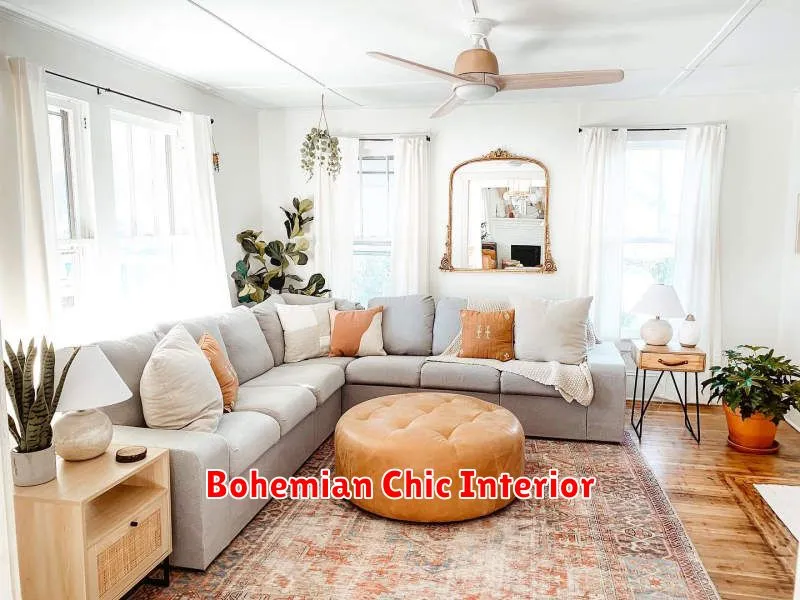
Bohemian chic interior design is a captivating blend of eclectic styles, creating a space that’s both vibrant and relaxed. It embraces a sense of free-spiritedness and global influences, resulting in a unique and personalized aesthetic.
Key elements of this style often include layered textiles, rich colors, and a curated collection of globally-inspired décor. Think plush rugs, embroidered throws, and patterned cushions in a mix of textures and patterns. These elements work together to create a warm and inviting atmosphere.
Color palettes in bohemian chic interiors are typically warm and earthy, often featuring deep jewel tones like emerald green, sapphire blue, and ruby red. These are balanced with natural shades such as terracotta, beige, and cream, creating a sense of depth and visual interest.
Furniture plays a significant role in achieving this look. Think low-slung seating, vintage finds, and handcrafted pieces. Mixing different styles of furniture, such as a worn leather armchair next to a carved wooden chest, adds to the eclectic charm.
Lighting is crucial in setting the mood. Layering different light sources, such as floor lamps, table lamps, and string lights, is key to creating a warm and inviting ambiance. This creates pockets of light and shadow, adding depth and texture to the space.
Accessories are where the bohemian spirit truly shines. Think macrame wall hangings, ethnic textiles, vintage mirrors, and collections of interesting objects. These pieces tell a story and add personality to the room, reflecting the homeowner’s unique style and travels.
Plants bring a natural element to the bohemian chic aesthetic, adding life and vibrancy to the space. A variety of potted plants, from lush ferns to trailing succulents, can soften the edges and create a calming atmosphere.
Ultimately, bohemian chic is about creating a space that reflects your personality and embraces individuality. It’s a style that encourages creativity and allows for personal expression through a unique blend of textures, colors, and global influences. It’s about creating a home that feels both lived-in and effortlessly stylish.
Compact Urban Layout
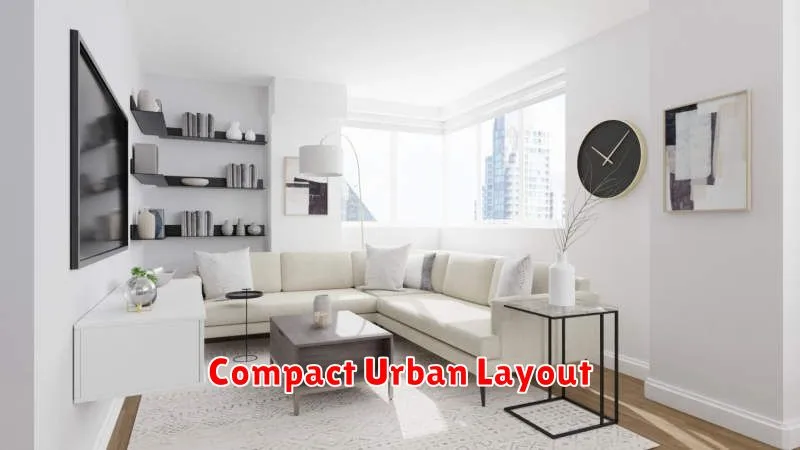
A compact urban layout prioritizes efficient land use and minimizes sprawl. This design approach aims to create vibrant, walkable neighborhoods where residents have easy access to amenities, services, and public transportation.
Key features often include higher density housing, such as apartments and townhouses, reducing the need for extensive car-dependent suburban development. Mixed-use zoning allows for a variety of commercial and residential spaces within the same area, fostering a lively and diverse environment.
Improved pedestrian and cycling infrastructure is crucial. Wide sidewalks, dedicated bike lanes, and well-connected green spaces encourage active transportation and reduce reliance on cars. The integration of public transit, such as buses, trams, or light rail, is also essential for a truly effective compact layout.
Benefits extend beyond just convenience. A compact city often leads to reduced carbon emissions due to less driving, lower energy consumption from smaller housing units, and shorter commute distances. This contributes to improved air quality and a smaller environmental footprint.
However, careful planning is necessary to avoid negative consequences. Sufficient green spaces are vital to counteract the higher density. Addressing potential challenges with parking and traffic management is also important to ensure the livability and functionality of the compact urban environment.
Ultimately, a successful compact urban layout balances the needs of residents with the goals of environmental sustainability and economic viability, creating a thriving and resilient community.
Mid-Century Modern Aesthetics
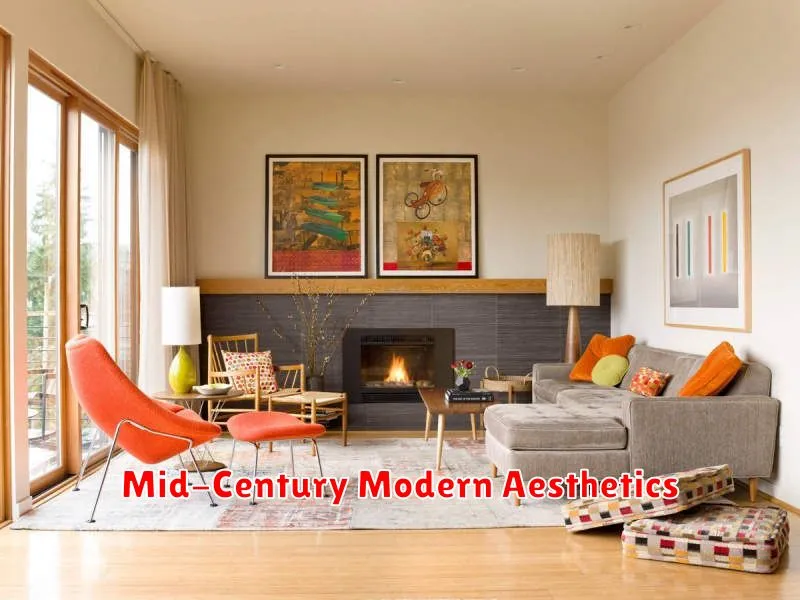
Mid-Century Modern, a design movement spanning roughly from the 1930s to the 1960s, continues to captivate with its timeless appeal. It’s characterized by a clean, functional aesthetic that blends simplicity with elegance.
Key features include organic forms inspired by nature, a preference for natural materials such as wood and leather, and a focus on minimal ornamentation. Think sleek lines, tapered legs on furniture, and the use of bold colors accented with neutral tones.
The movement’s emphasis on functionality is evident in the design of furniture and architecture. Pieces were designed to be both beautiful and practical, often incorporating innovative materials and techniques. This focus on practicality makes Mid-Century Modern pieces highly adaptable to modern living.
Iconic designers like Charles and Ray Eames, Eero Saarinen, and Arne Jacobsen significantly shaped the movement, creating pieces that remain highly sought-after today. Their designs showcase a masterful blend of form and function, reflecting the era’s optimism and belief in progress.
Beyond furniture, Mid-Century Modern aesthetics influenced architecture, graphic design, and even fashion. Its impact is still visible in contemporary design, reflecting a lasting influence on how we appreciate form, function, and the integration of nature in our built environment. The enduring legacy of Mid-Century Modern lies in its timeless elegance and enduring practicality.
Luxury Contemporary Setup
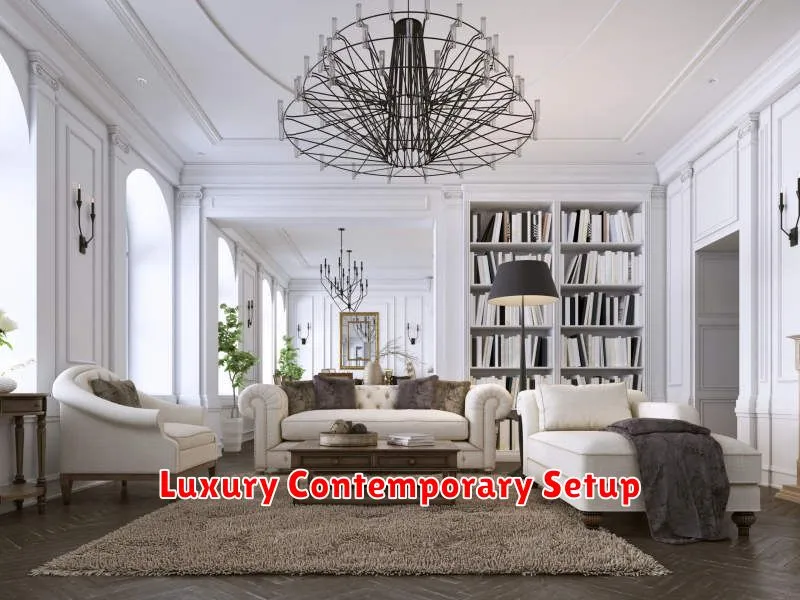
Create a luxurious and contemporary living space with carefully selected furniture and decor. The key is to balance minimalist aesthetics with high-end materials and sophisticated design elements.
Start with a neutral color palette as a foundation. Think creamy whites, soft greys, or warm beige tones. This allows for flexibility in adding pops of color through accessories and artwork.
Invest in high-quality furniture. Pieces with clean lines, simple silhouettes, and premium materials like leather, velvet, or natural wood will elevate the overall feel. Consider a statement sofa in a rich fabric, paired with sleek, modern armchairs.
Lighting plays a crucial role in setting the mood. Incorporate a mix of ambient, task, and accent lighting. A statement chandelier can add a touch of glamour, while strategically placed floor lamps and table lamps provide functional illumination.
Don’t underestimate the power of accessories. Subtle details such as stylish throw pillows, textured blankets, and unique sculptures can add personality and visual interest without overwhelming the space. Choose pieces that reflect your individual style and taste.
Finally, consider incorporating natural elements. Plants, whether large potted trees or smaller succulents, bring life and freshness into the room. Natural materials like stone, wood, and rattan add warmth and texture, contributing to a more inviting and calming atmosphere.
By carefully curating your furniture, lighting, and accessories, you can achieve a luxury contemporary setup that is both stylish and comfortable. Remember that less is often more when it comes to creating a sophisticated and refined space.
Vintage Elegance
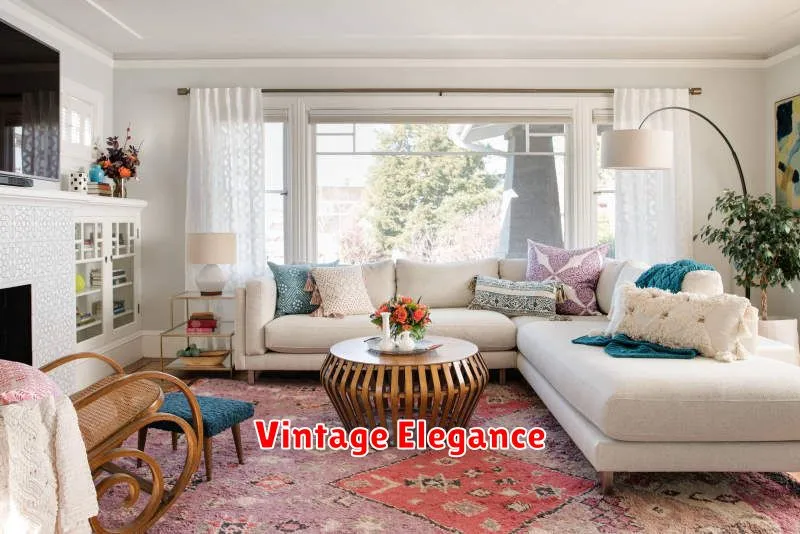
Vintage elegance is a style that transcends fleeting trends, embracing the timeless charm and sophisticated details of bygone eras. It’s a curated aesthetic, drawing inspiration from various historical periods, but always maintaining a sense of refined grace.
The core of vintage elegance lies in the quality of materials and craftsmanship. Think luxurious fabrics like silk, velvet, and brocade, often adorned with intricate embroidery or delicate lace. Attention to detail is paramount, with meticulous stitching, carefully chosen buttons, and thoughtfully designed silhouettes all contributing to the overall effect.
Color palettes often favor muted tones – deep jewel tones, soft pastels, or classic neutrals like ivory and cream. These colors create a sense of sophistication and understated luxury. However, strategic pops of bolder hues can add a touch of vibrancy and personality without compromising the overall sense of refined elegance.
Accessories play a crucial role in completing the vintage elegant look. Delicate jewelry, perhaps a vintage brooch or pearl necklace, adds a touch of sparkle and personality. A well-chosen handbag, whether a classic structured satchel or a more whimsical clutch, can elevate the entire ensemble.
Ultimately, vintage elegance is less about adhering to strict rules and more about cultivating a personal style that reflects a love for quality, craftsmanship, and timeless beauty. It’s about embracing the past while creating a look that is uniquely your own – a style that is both classic and contemporary.
Eclectic Mix of Patterns
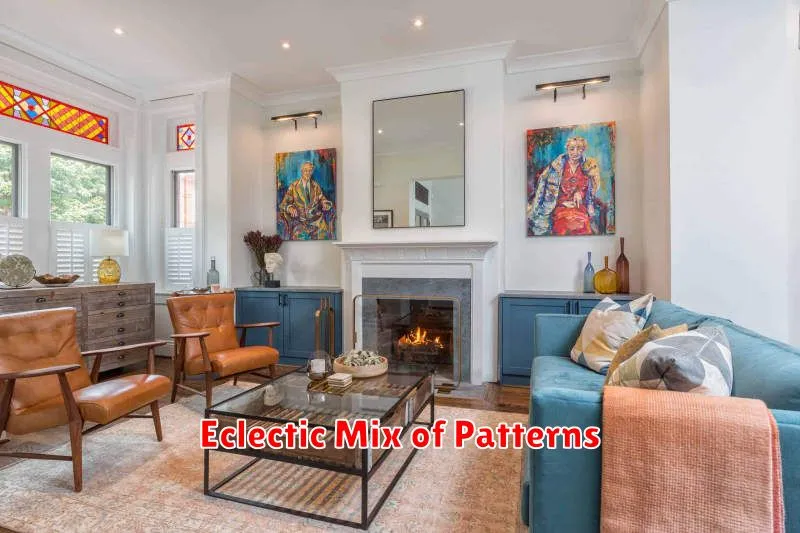
An eclectic mix of patterns can create a visually stunning and unique space. It’s all about finding the right balance and understanding how different patterns interact.
Key Considerations when mixing patterns include:scale,color palette, and pattern type. Mixing large and small patterns adds visual interest, while a cohesive color palette unites the diverse elements. Consider combining geometric patterns with floral prints, or stripes with polka dots – the possibilities are endless!
Scale is particularly important. Pairing a large-scale pattern with a smaller one prevents the design from feeling overwhelming. For example, a bold floral wallpaper might be beautifully complemented by smaller patterned throw pillows or rugs.
Color plays a crucial role in unifying the different patterns. Sticking to a limited color palette, even if the patterns themselves are varied, ensures a harmonious look. Think about using analogous colors (colors next to each other on the color wheel) or a monochromatic scheme.
Pattern types offer another avenue for creative exploration. The contrast between organic and geometric patterns can be strikingly effective. A subtle stripe might provide a grounding element for more flamboyant patterns.
Ultimately, the success of an eclectic pattern mix lies in experimentation and intuition. Don’t be afraid to try different combinations until you achieve a look that reflects your personal style and creates a space that feels both exciting and comfortable.

